Mongolia 2016
The Mongolia pictures are in two pages: Mongolia – 1 and Mongolia – 2. You are on the first page.
We decided to visit Mongolia the first week in October in conjunction with our trip to China. We were going to visit China the last three weeks of October with some friends using Grand Circle Travels, and thought “As long as we’re in the neighborhood, let’s visit Mongolia.” We also wanted to experience sleeping in a ger in the desolate plains of Mongolia.
Mongolia is between China and Russia. For a good description of the history of the country, see the Lonely Planet Travel Guide to Mongolia. Also, a recent December 2016 documentary movie, The Eagle Huntress, is about Aisholpan, a 13-year-old Mongolian girl, as she trains to become the first female in twelve generations of her Kazakh family to become an eagle hunter. The scenes are just like we saw, except we arrived too late to see the Eagle Festival.
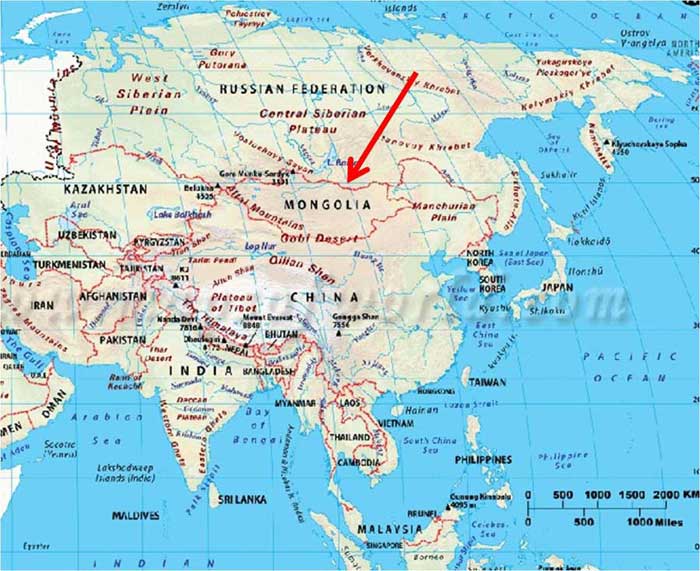
We arranged our visit through Zaya Hostel, which got very good reviews in the Lonely Planet Guide for Mongolia. They offered several tour packages, and we selected the 5-day “Time Travel to Ancient Capital of Mongolia Kharkorum” tour. It included a jeep, a driver, and an English-speaking tour guide. We would be staying overnight in gers for three nights and at the hostel for 2 nights. Our experience was very positive, and we highly recommend them.
The owners, Anand and Amar (brothers) are from Mongolia, and attended the University of Texas at Dallas in Hotel Management and speak excellent English. They lived in Plano for a while. It’s a small world.
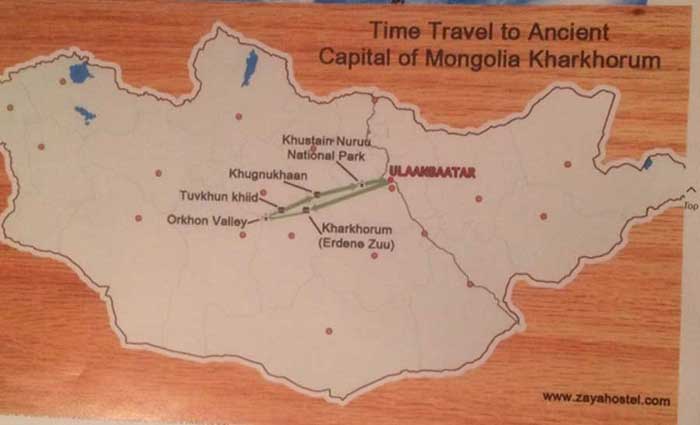
Very brief Mongolian history, excerpted from Lonely Planet Travel Guide to Mongolia and Wikipedia.
The Land
Mongolia is a huge landlocked country, about three times the size of France. The southern third of Mongolia is dominated by the Gobi Desert, which stretches into China, and which is mostly desert steppe and has sufficient grass to support scattered herds of sheep, goats, and camels. There are also areas of desert steppe in low-lying parts of western Mongolia.
Much of the rest of Mongolia is covered by grasslands or mountain forest steppe. Stretching over about 35% of the country, these desert steppes are home to vast numbers of gazelle, birdlife, and livestock. The far northern areas are essentially the southern reaches of Siberia and are covered by larch and pine forests.
- Steppe definition: a vast land in regions of wide temperature range (as in southeastern Europe and parts of Asia) that is dry, usually rather level, and covered with grass.
Some History
Over the past 2000 years, there is possibly no other place on the planet that has exported as much history as Mongolia. Hordes of warriors rode their small but powerful horses down from the Mongolian Plateau in three dramatic waves – Huns, Turk, and, finally, Mongol – to challenge and transform the world. The steppe warriors not only conquered nations, they swept up whole civilizations and reassembled them into intercontinental empires of a scale never before reached by any other people.
Although each of the three waves produced its distinctive influence, the name of Chinggis Khaan has achieved a unique spot in the world’s imagination. He created the nation in 1206 and named it after his Mongol lineage.
After the abduction of his wife Borte, Chinggis recognized the role of kidnapping in perpetuating feuds among clans and outlawed it. Similarly, he perceived religious intolerance as being a source of violence in society, and so decreed religious freedom for everyone.
To promote trade and communications, Chinggis built an international network of postal stations that also served as hostels for merchants. He decreased and standardized the taxes on goods so that they would not be repeatedly taxed. Under these laws, the Mongol empire formed the first intercontinental free-trade zone.
In an era when ambassadors served as hostages to be publicly tortured or killed during times of hostilities, Chinggis Khaan ordered that every ambassador be considered an envoy of peace. This law marked the beginning of diplomatic immunity and international law.
The Mongols were little more than a loose confederation of rival clans until the birth of Temujin in 1162. Overcoming conditions that would have crushed lesser men, he rose to become the strongest ruler on the steppe, and in 1206 founded the Mongol empire and took the title Chinggis Khaan. He was already 44 years old at this stage, but since the age of 16, when his bride was kidnapped, he had been fighting one clan feud and tribal war after another. Frustrated with the incessant chaos, he began killing off the leaders of each clan as he defeated them and incorporating the survivors into his own following. Through this harsh but effective way, Chinggis Khaan forced peace onto the clans around him.
He named his new state the Great Mongol Nation. Over time the Mongols conquered the greatest armies of the era and subdued hundreds of millions of people.
In battle he was merciless, but to those who surrendered without fighting, he promised protection, religious freedom, lower taxes, and a heightened level of commerce and prosperity. His law did more to attract people into his empire than his military power. Based on military success and good laws, his empire continued to expand after his death until it stretched from Korea to Hungary and from India to Russia.
Over time there were revolutions, revolts, and battles with the Chinese, Japanese, Russians and Communists. After the collapse of the Qing dynasty in 1911, Mongolia declared independence from the Qing dynasty, and in 1921 established de facto independence from the Republic of China. Shortly thereafter, the country came under the control of the Soviet Union, which had aided its independence from China. In 1924, the Mongolian People’s Republic was declared as a Soviet satellite state. After the anti-Communist revolutions of 1989, Mongolia conducted its own peaceful democratic revolution in early 1990. This led to a multi-party system, a new constitution of 1992, and transition to a market economy.
Friday September 30. Here we are, packed for an entire month! Using Uber the first time was a challenge. Tammy Nguyen got us to the airport safely and on time. There was an accident on 190 which slowed us down. I’m glad we left early.
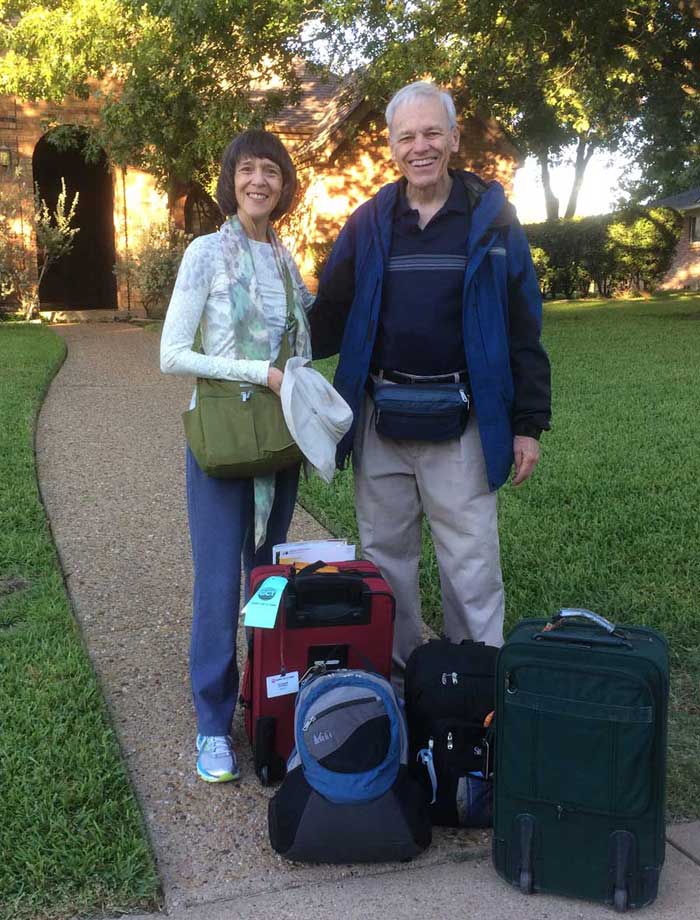
We flew business class directly from Dallas to Beijing on American Airlines frequent flyer miles, which John had been saving for a China trip. The flight time was 14 hours! Business class on the Boeing 787 was luxurious. We each had our own pod, and you could lay flat to sleep. John tried to sleep but to no avail, so he watched 4 movies – Pelé (a biography about Pelé, the Brazilian soccer legend), Race (a biography about Jesse Owens, the track legend), Snow White cartoon, and Willie Wonka and the Chocolate Factory. Suzanne, when she wasn’t sleeping or eating, watched Pelé, which she liked very much, Race, and 45. We had three very nice meals.
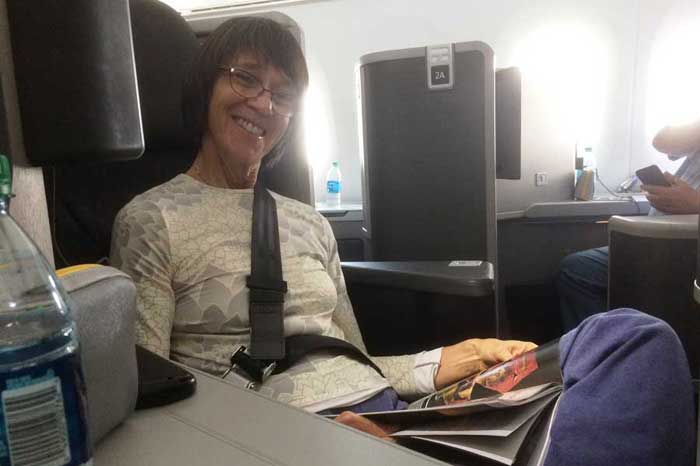
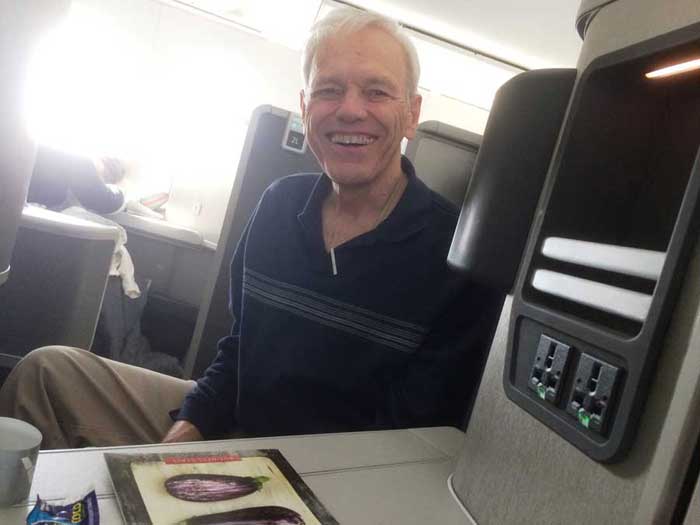
Saturday, October 1. We arrived in Beijing. Immigration took a full 45 minutes, as the arriving crowds were huge. No one knew where to catch the free shuttle to the Citic Hotel near the airport. Not too many people spoke English, and directions from the hotel were confusing. We finally found the shuttle pickup – had to go from Terminal 3 to Terminal 2 on a 20 minute bus ride. The taxi drivers were so pushy. We refused them as we worked on finding the shuttle to the hotel. We finally found it and got to the hotel.
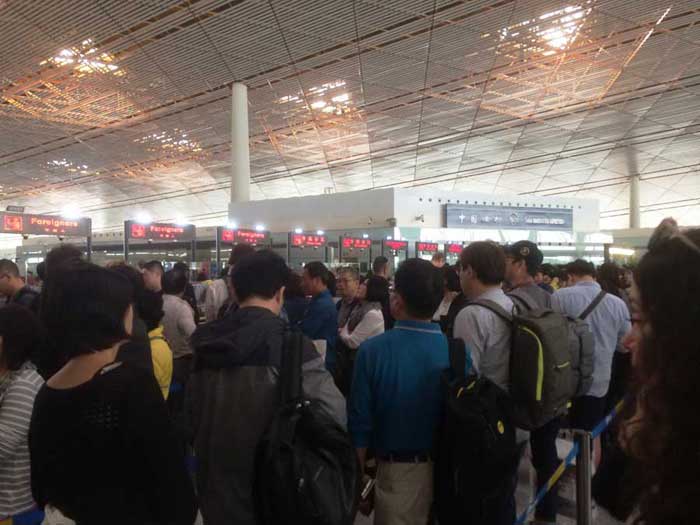
That night Suzanne had her first really Chinese dinner at the Citic Hotel.
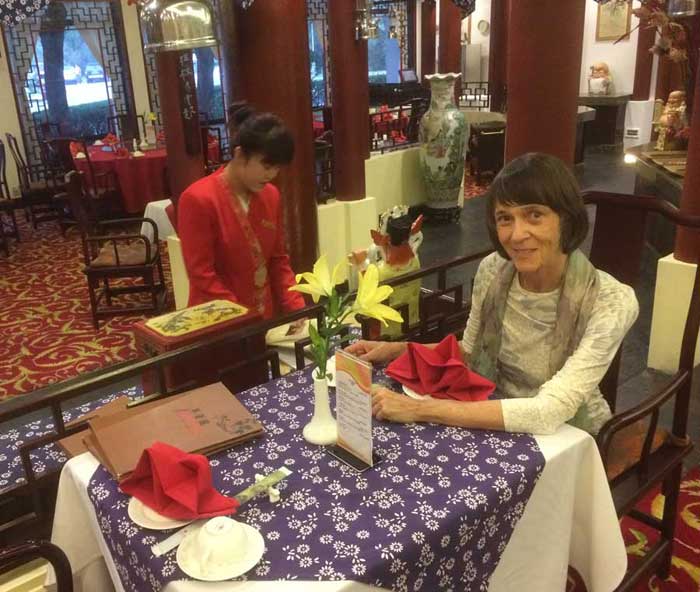
Sunday, October 2. We got up at 4:00 am, took the 5:45 am shuttle to Terminal 4 at the airport to catch an early morning flight from Beijing to Ulaanbaatar. It took a couple of asks to find where to get our boarding passes. Having the printed copy of the flight information in English and Chinese really helped. Then we had to ask a couple of times where the gate was, as the Beijing airport is HUGE and so crowded, even at 6:30 in the morning. It took us 45 minutes to go through immigration and security. The lines were very long.
We’re glad Suzanne brought fig newtons, as that was our only breakfast. The plane was full. They served a box lunch.
When we arrived in Ulaanbaatar late that morning at the Chinggis Khaan airport, Byson from the hostel was waiting for us with a sign that said “Zaya.” That was so very nice. He drove us to the hostel.
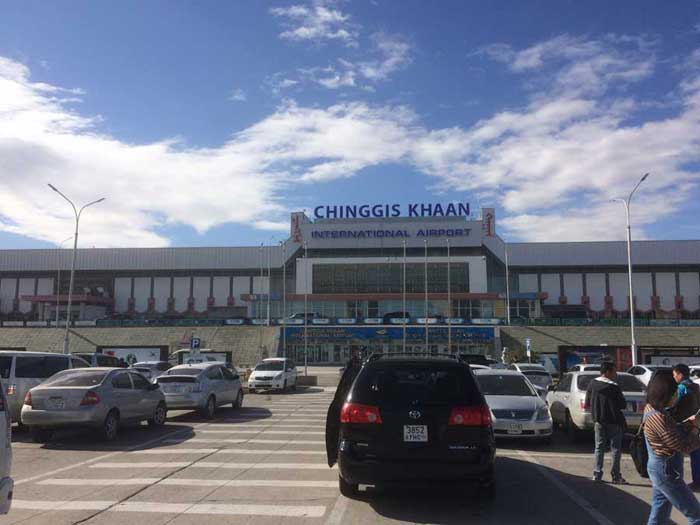
That afternoon we met our tour guide, Tsetseg, pronounced Tiss-e-k, with nickname “Sissy.” She took us to a performance by the Mongolian National Song and Dance Ensemble. The acrobat at the end was unreal with what all she could do with her body. We enjoyed the entire performance.
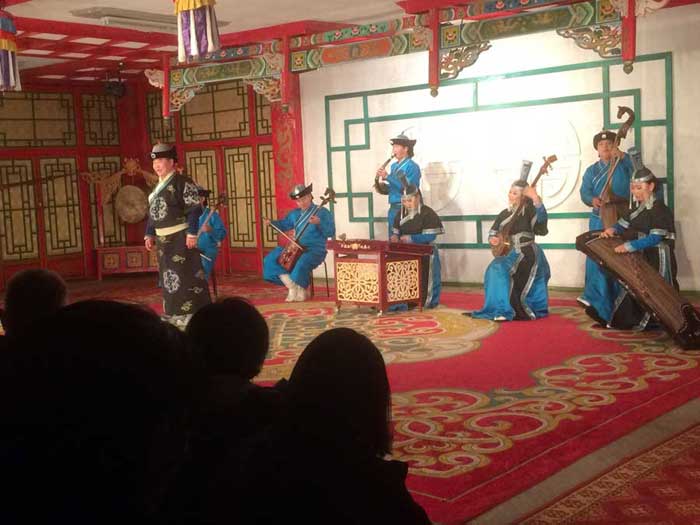
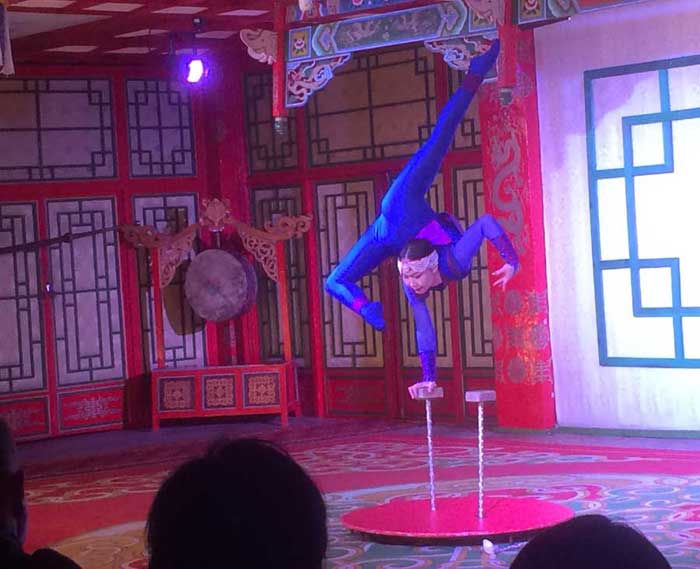
Monday October 3. The Zaya Hostel is on the third floor.
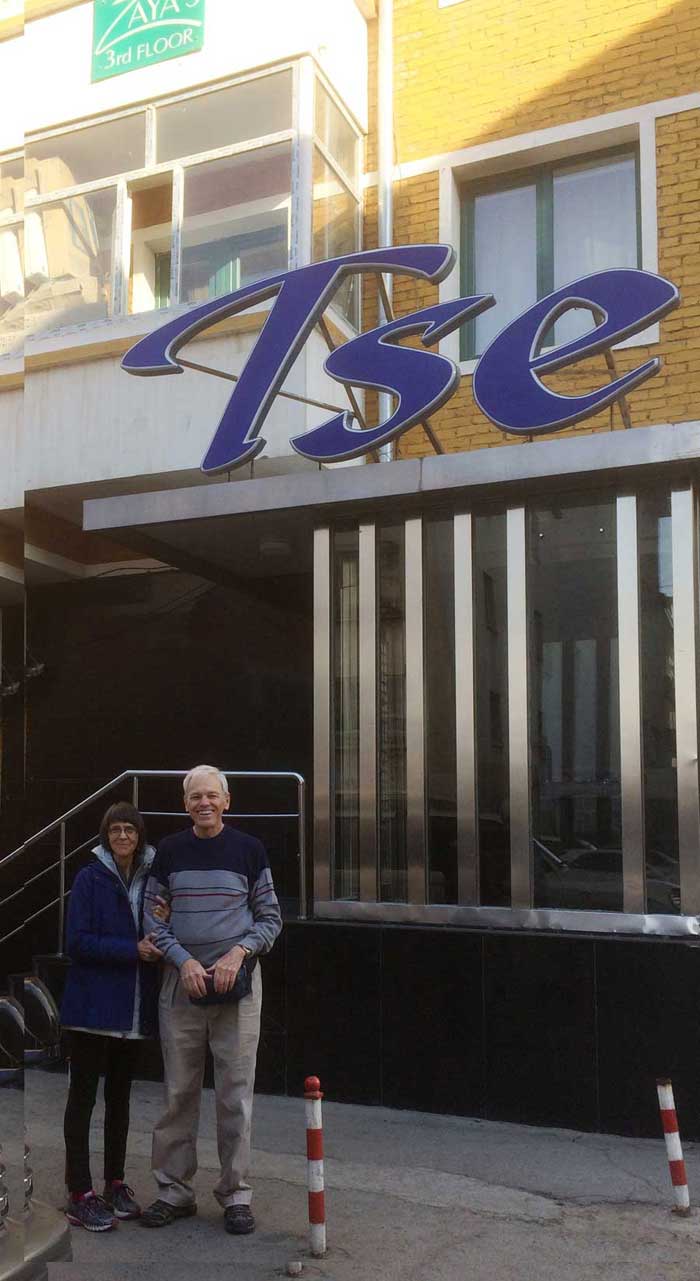
It was 39° in the morning when we started. Brrr. We knew it would be cold, so we had lots of layers. Guide Tsetseg, Suzanne, and driver Bulgaa.
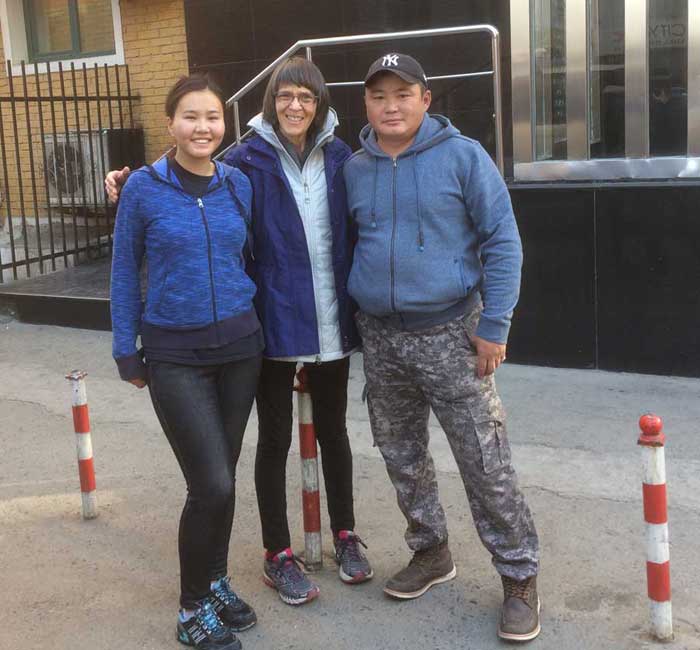
All four of us climbed into the jeep and we took off. As we drove out of town, we saw lots of heavy industry – cement plants, steel fabrication, lots of heavy pipes going everywhere. We also saw a lot of deserted industrial buildings.
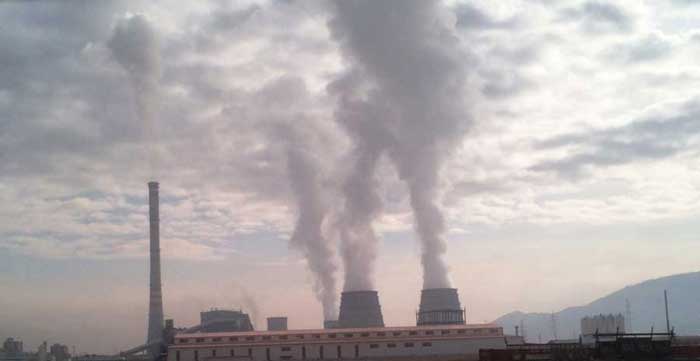
After we got out of town we turned onto dirt roads, and drove and drove for hours. The landscape was open range and treeless. A stark beauty. We saw stupas every once in a while.
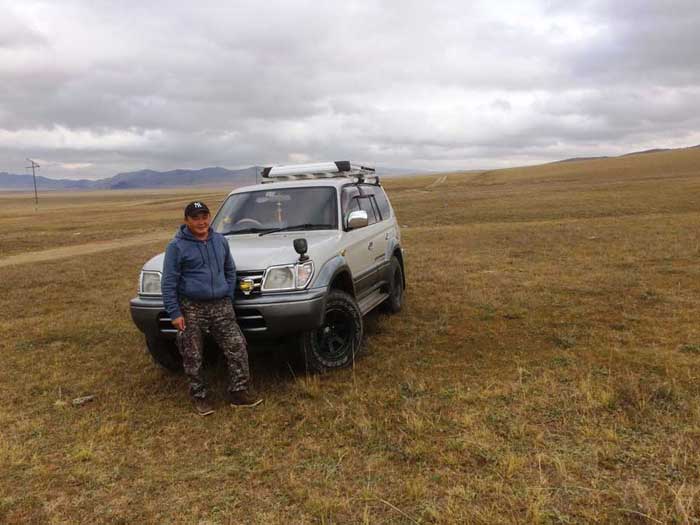
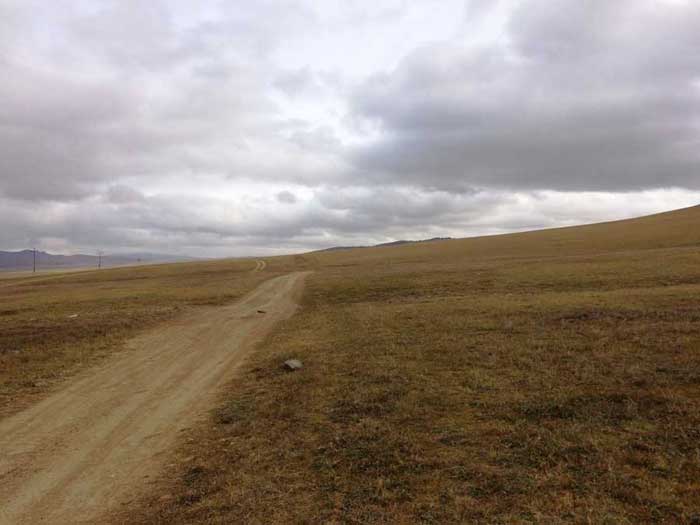
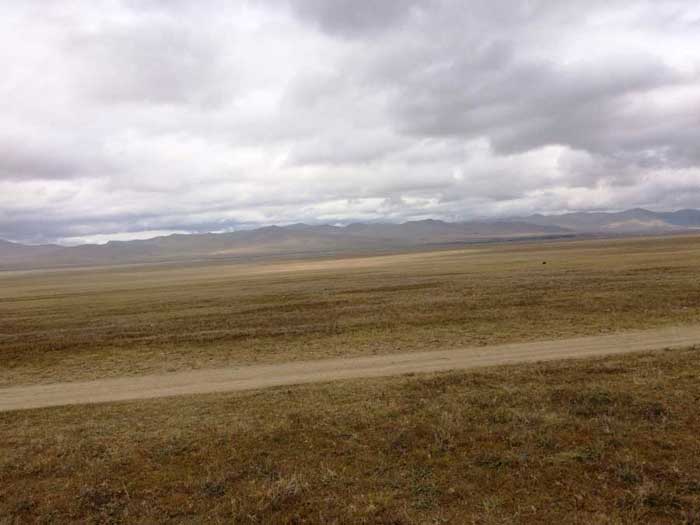
There were occasional herds of cattle, horses, sheep, and goats.
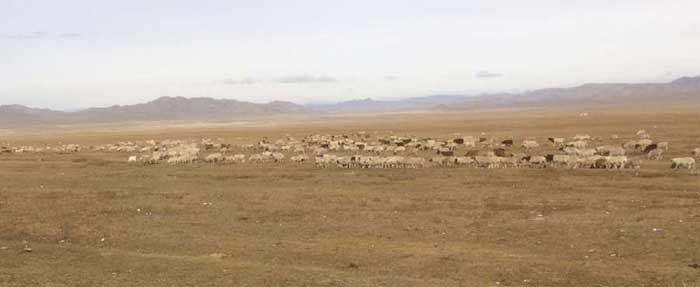
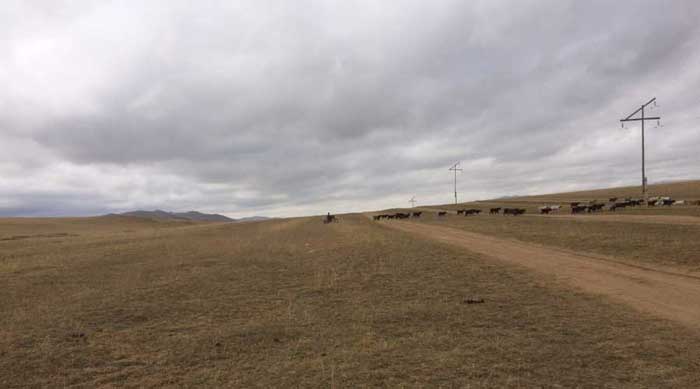
We had our first home-prepared Mongolian lunch (not in a ger). To welcome us they served us each a bowl of warm milk and some hard cookies. We found out later that that was our welcome food at all the gers. The dough for the dumplings was hand rolled.
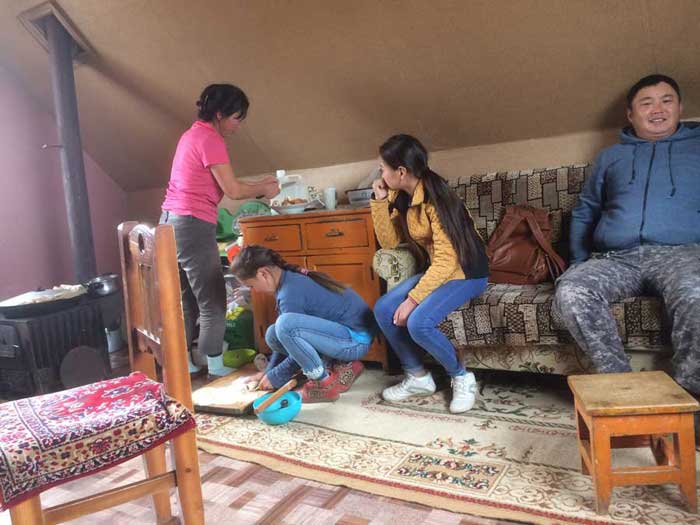
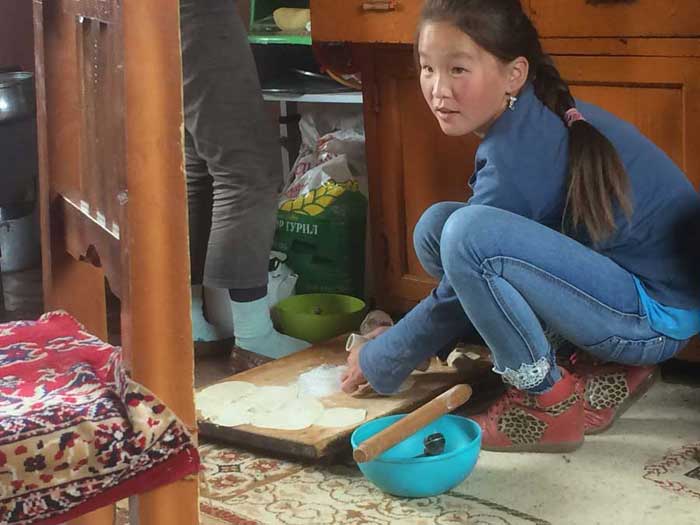
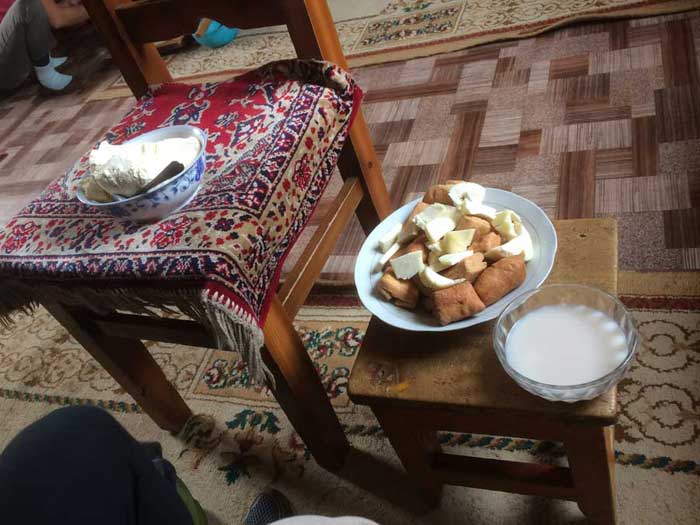
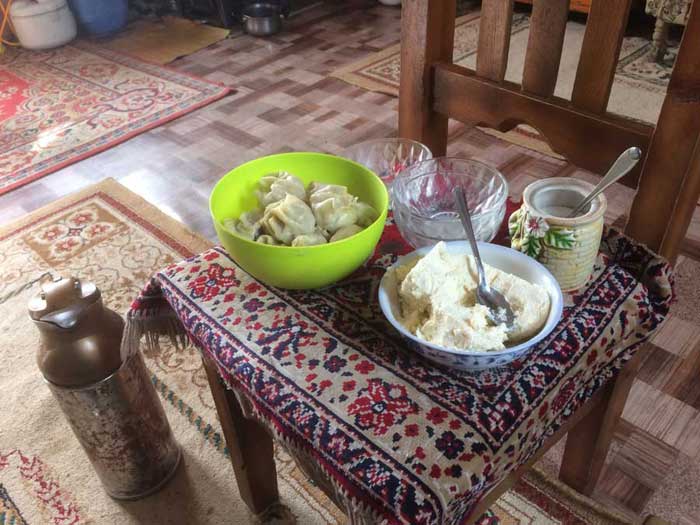
We visited a museum, that had some archeological findings.
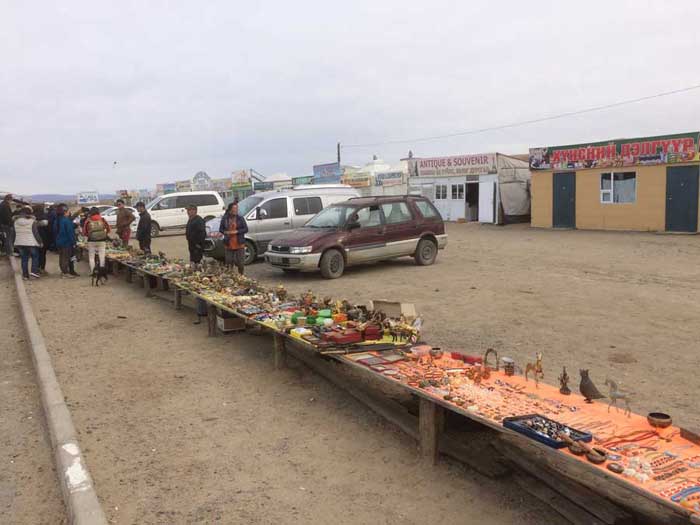
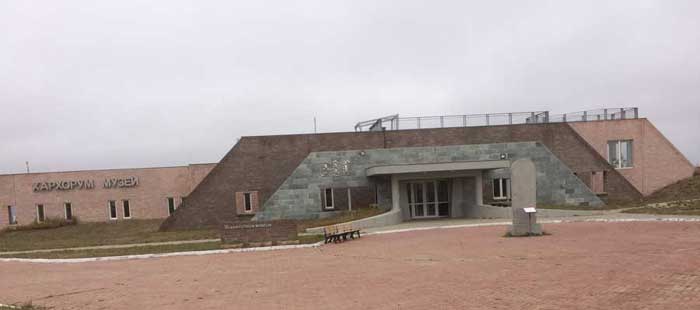
That night we stayed in a ger in a tourist camp. At this ger and at the others, there were blankets available, as well as sleeping bags furnished by Zaya.
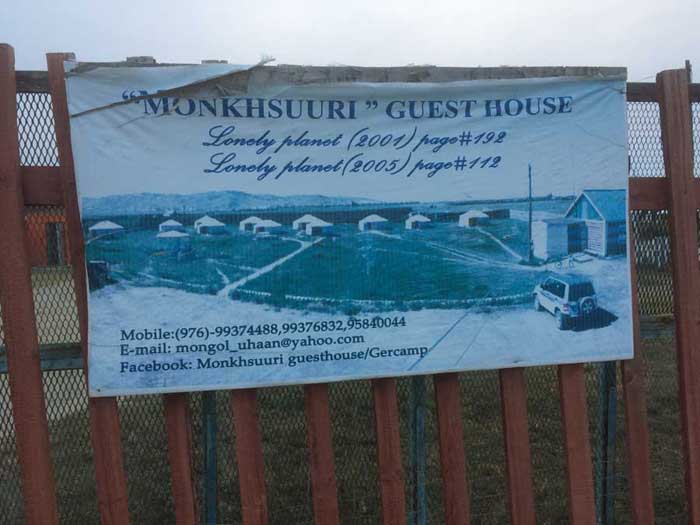
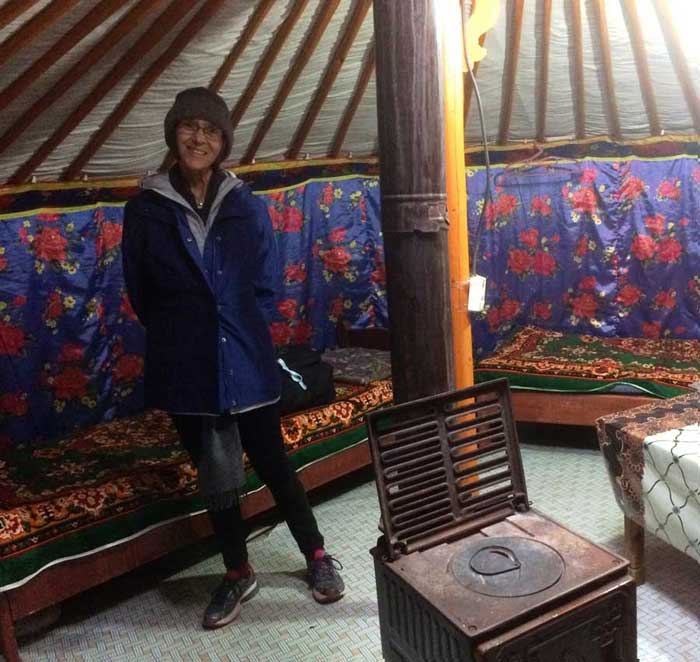
Tuesday October 4.
There were light snow flurries when we got up. After a while they ceased and the roads were dry.
When we drove through various towns where the roads were paved, much of the time there were huge potholes we had to dodge. Out of town the dirt roads resumed and we would weave a lot to miss the deep ruts and washouts. It was a real challenge for the driver.
When there were utility poles, the wooden part was connected to a cement bottom post in the ground.
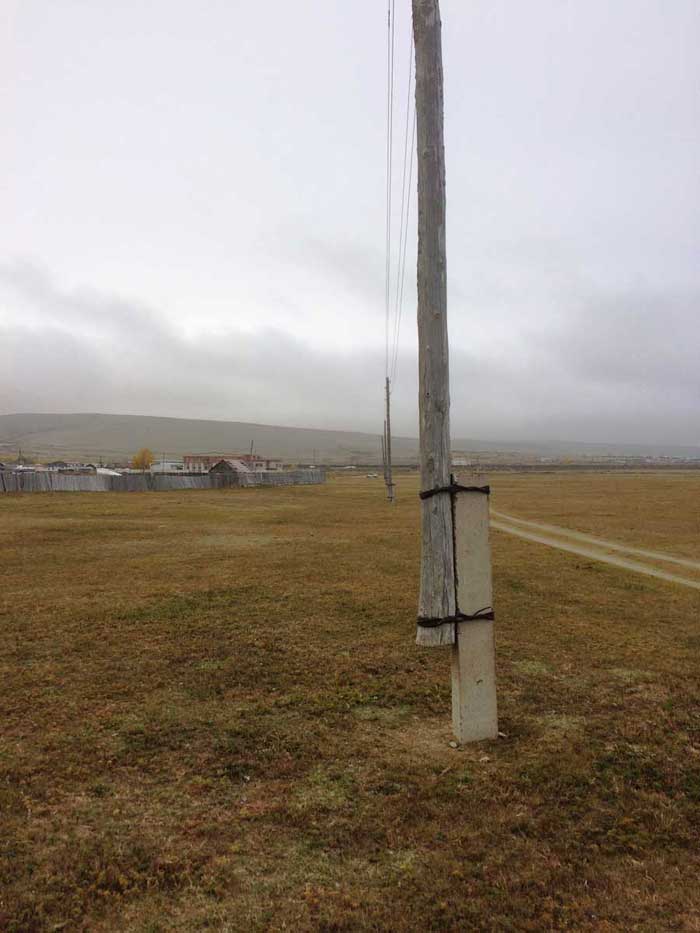
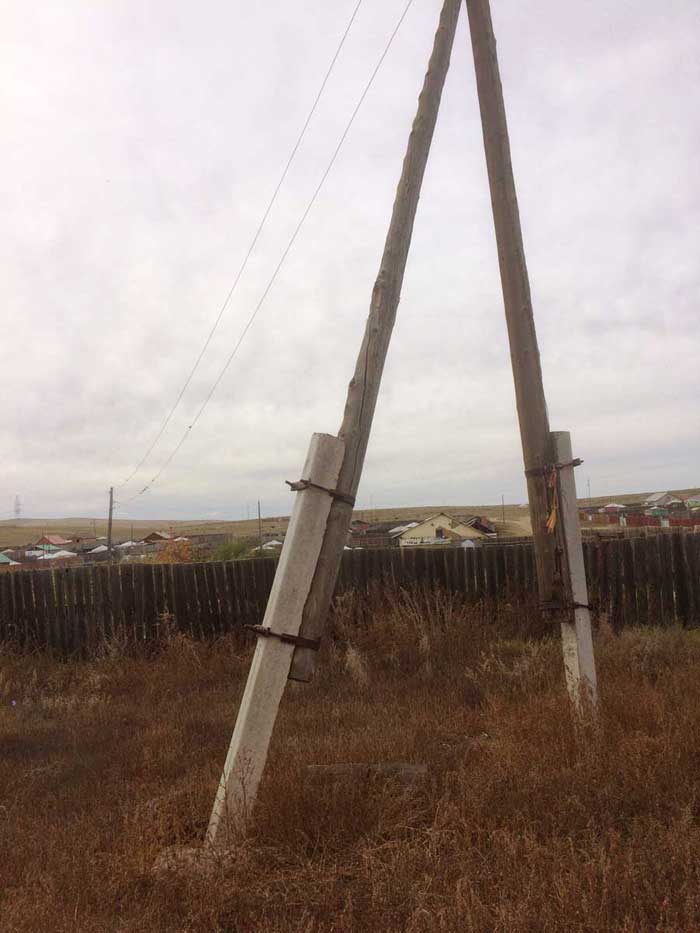
We drove to the oldest Buddhist monastery in Mongolia, the Erdene Zuu Monastery.
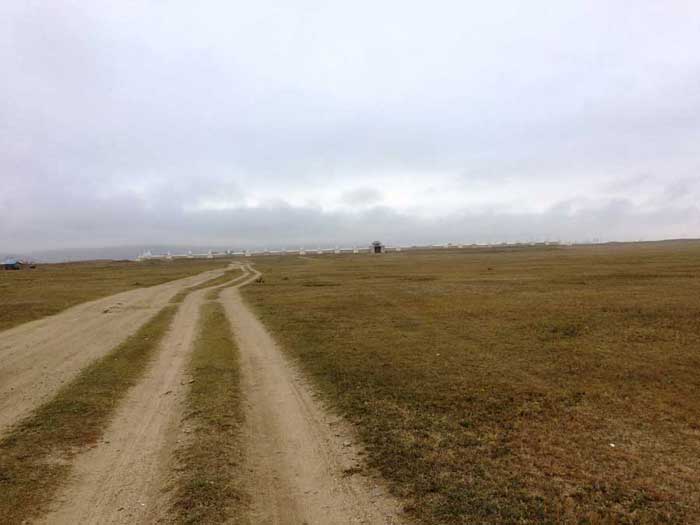
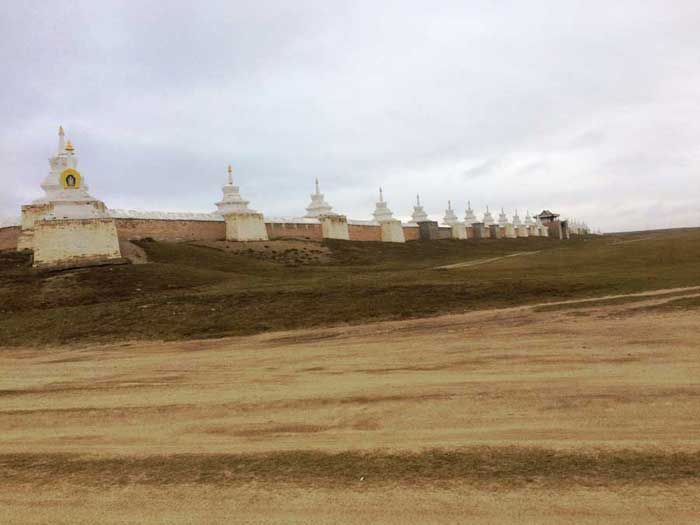
It was very cold – near freezing, and our guide loaned us some Mongolian coats. They were heavy but kept us warm.

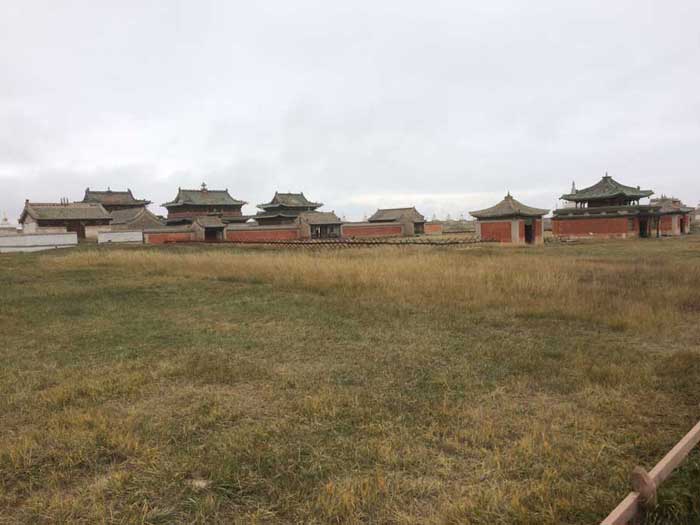
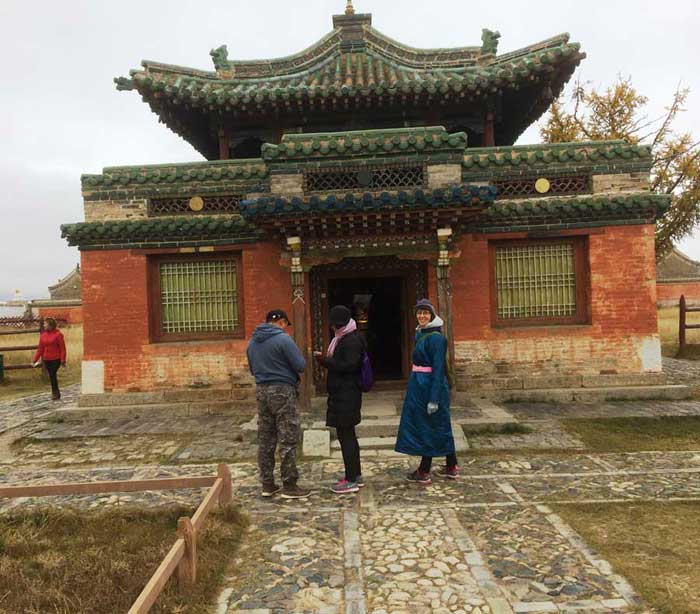
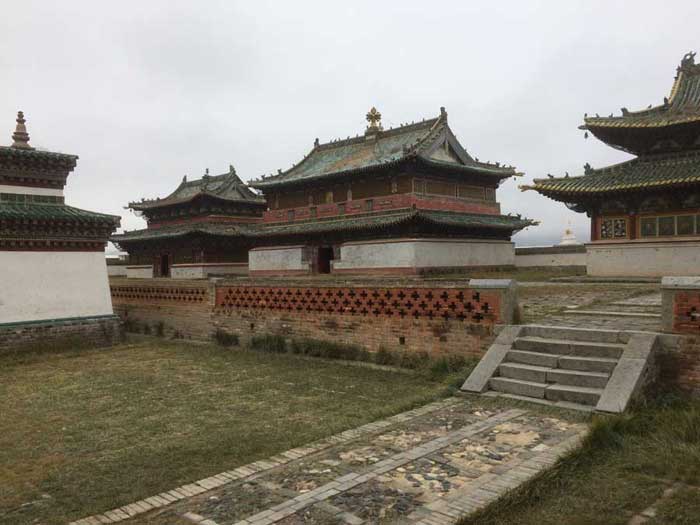
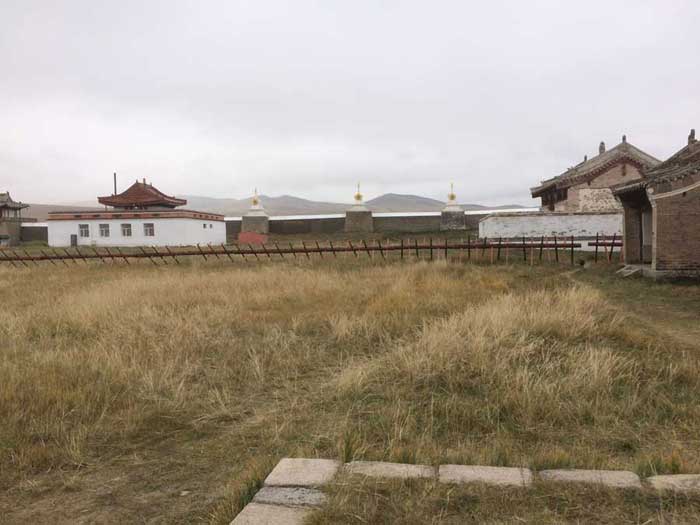
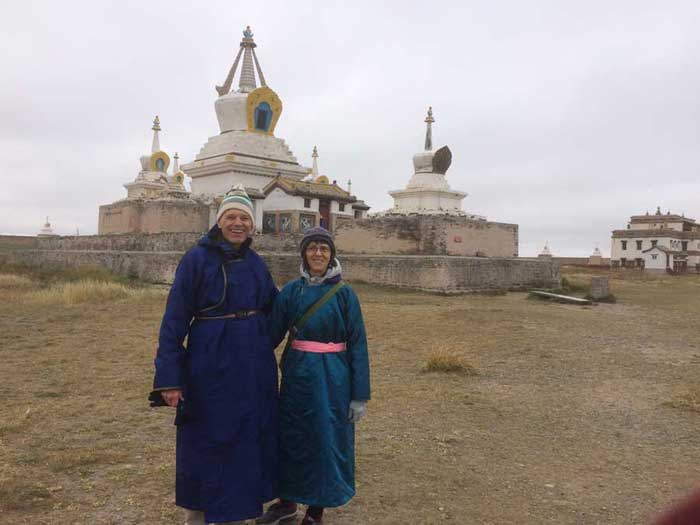

Some of the sidewalks in the monastery had interesting stone patterns.
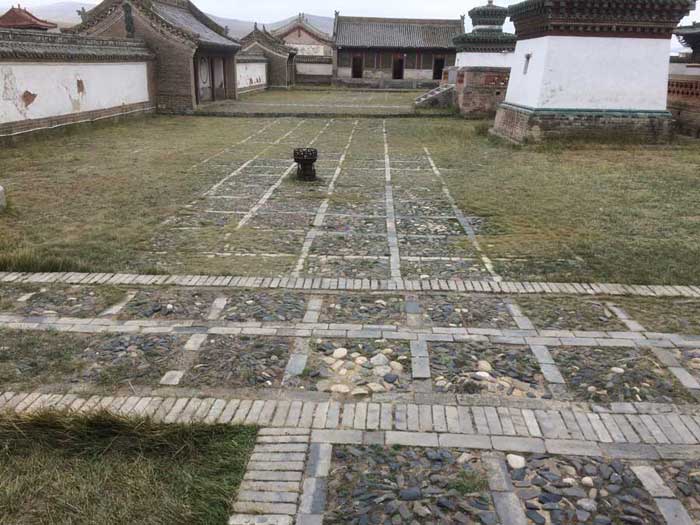
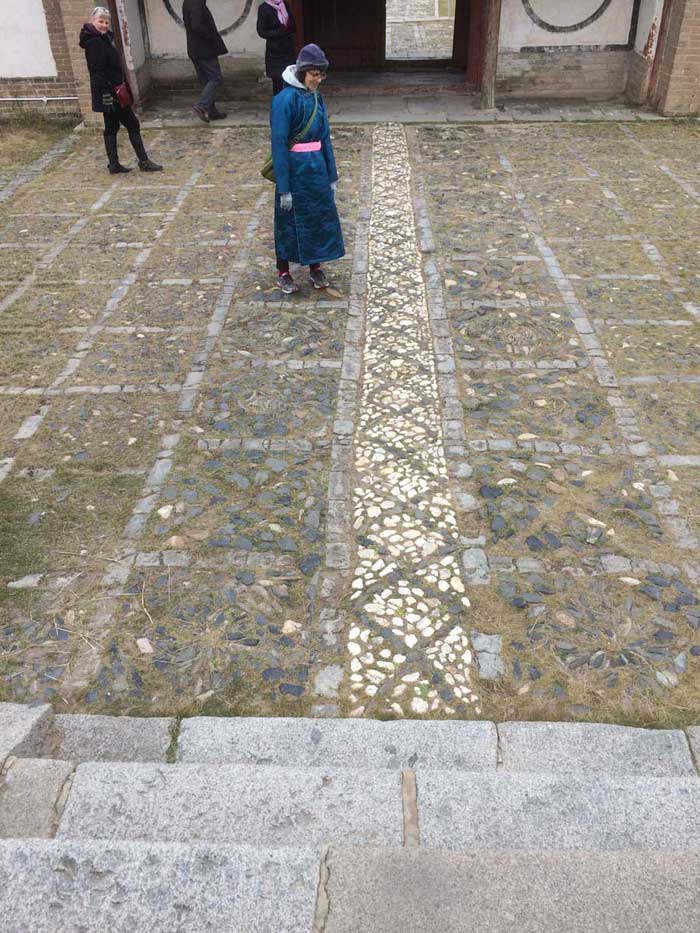

Please continue to the Mongolia – 2 page for the rest of the Mongolia pictures. Thanks.
